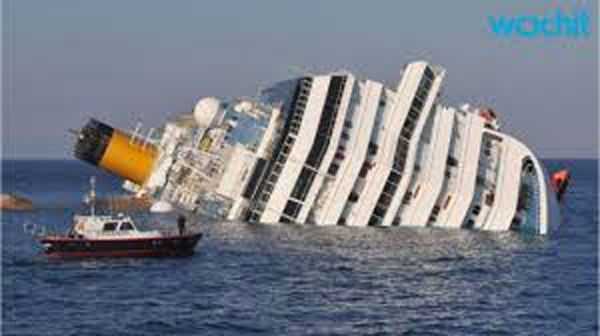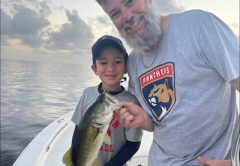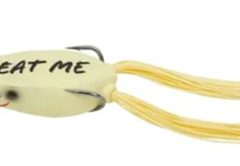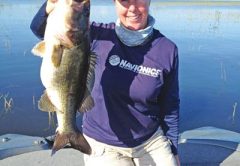DISMANTLING OF COSTA CONCORDIA BEGINS
MAY 15TH, 2015 – The wreck of the Italian cruise ship Costa Concordia arrived at its final destination and is ready for final dismantling, a job expected to take more than a year and cost $114 million.
The wreck was towed to Molo ex Superbacino, where it will be recycled by the Ship Recycling Consortium — a group formed by Saipem (51 percent) and San Giorgio del Porto (49 percent). Those two companies joined forces in September 2012 with the aim of providing green ship dismantling services.
About 50,000 tons of steel and 2,000 tons of copper are expected to be recovered from the vessel. Before the ship arrived at Molo ex Superbacino, more than 5,700 tons of furniture and interior equipment was removed so the wreck could be towed over the breakwater of the Prà Voltri Port to reach the dismantling dock.
The dismantling and recycling project is being carried out in four operational phases that require as many as 250 people at a time. About 80 percent of the vessel is expected to be recyclable.
The 114-ton luxury liner capsized after striking rocks as it sailed close to the island of Giglio off Tuscany in January 2012, killing 32 people and setting off a chaotic evacuation of more than 4,000 passengers and crew.
AMERICAN BOAT AND YACHT COUNCIL
MAY12,2015 – The American Boat and Yacht Council released new consolidated boat warning labels with updated and standardized graphics in an effort to increase boater safety with easily understood information.
The average new boat has numerous warning labels affixed to it. The same length and style of boat from a different builder may have more or fewer labels, in dissimilar locations on the vessel, and with unique appearances.
Research found that the high number of labels diluted the importance of individual warning messages and that owners often remove them for aesthetic reasons.
The ABYC project was based on a National Marine Manufacturers Association-commissioned study analyzing information from the Coast Guard’s boating accident reporting data over five years. The ABYC evaluated existing labels based on the top accident types. The result was the creation of new warning labels for a given location on a specific boat type.
“ABYC continues to set the standard for safer boating,” ABYC board chairman Dave Marlow said in a statement. “Through extensive industry research, it developed guidance for manufacturers to provide consumer warnings in a format that is easier to understand. This is a big step forward and one that will certainly benefit boaters.”
Professional-grade printed sheets are now available from ABYC. Each sheet varies slightly in the warning topics that are present and what is required for the boat type, including helm, transom, occupant and cabin occupancy.
U.S. COAST GUARD RELEASES 2014 BOATING-DEATH STATISTICS
MAY 14TH, 2015 – In 2014, the Coast Guard counted 4,064 accidents that involved 610 deaths, 2,678 injuries and approximately $ 39 million dollars of damage to property as a result of recreational boating accidents. This is the second-lowest number of yearly boating deaths on record.
The lowest number of yearly boating deaths was 560 in 2013, according to data released by the U.S. Coast Guard.
The most boating deaths occurred in 1973, when 1,754 people died.
“There are three basic things a boater can do to be safer on the water,” National Association of State Boating Law Administrators president Eleanor Mariani said in a statement.
“First, take a boating safety course,” Mariani said.
Where instruction was known, only 12 percent of deaths occurred on vessels where the operator had earned a nationally approved boating safety education certificate.
“Second, wear a life jacket,” she said.
Where cause of death was known, 78 percent of fatal boating accident victims had drowned. Of those drowning victims with reported life jacket usage, 84 percent were not wearing a life jacket.
“Third, don’t consume alcohol before or while boating. When you add alcohol to boating, your senses and judgment can be seriously affected,” she said. “Your reflexes, balance, coordination and alertness will deteriorate, along with your ability to deal with speed, other boats and threatening weather. You are setting yourself up for a boating accident,”
Alcohol use is the leading known contributing factor in fatal boating accidents; where the primary cause was known, it was listed as the leading factor in nearly one-fourth of deaths.
Don’t be fooled by the number of alcoholic drinks you consume while on the water. Bodily dehydration while boating greatly increases the impacts of just one alcoholic drink.
According to the statistics, eight out of ten boaters who drowned were using vessels less than 21 feet in length. Florida lead the nation in all categories recording 581 accidents, 70 fatalities, 327 injured and 7.4 million in property damage. California was a distant second with 379 accidents, 38 fatalities, and 256 injuries.
As a boater in Florida, we must all learn to Boat Smart and Boat Safe.
OWNERSHIP OF BOATUS TRANSFERRED TO GEICO
APRIL 29TH, 2015
BY RICHARD ARMSTRONG – BoatUS said on Tuesday April 28th that it is under new ownership.
In 2007, BoatUS was sold by founder and former chairman Richard Schwartz to Berkshire Hathaway-owned subsidiary National Indemnity Co.
In January, BoatUS was transferred in a change of ownership to Geico, another Berkshire Hathaway company, but one that BoatUS said is better suited to help it grow.
“We are better positioned for growth because Geico is a consumer-oriented company, rather than NICO, which is another insurance company, but one more focused on commercial auto and general liability coverage,” BoatUS vice president for public affairs Scott Croft told Trade Only Today. “Geico, which has assets of over $32 billion, really knows how to treat their customers well, so we share the same philosophy.”
Croft said growth among the group’s 530,000 strong membership has remained modest since the recession ended and the group is looking to jump-start growth under new ownership.
“If we can double or even triple the membership it will help not only our members, but recreational boaters and the industry as a whole because we will have a much larger voice in Washington, D.C.,” he said.
In the shorter term, the change of ownership to Geico changes nothing for BoatUS members or customers. BoatUS annual membership dues and all on-water and roadside towing plans remain the same. Members with BoatUS Marine Insurance do not need to switch to Geico.
BoatUS leaders stress that the group remains dedicated to its role as the nation’s leading advocate and organization for boaters, fighting for their rights and offering on-water services and savings.
“We will continue to advocate for this country’s recreational boat owners and remain committed to our bedrock goal of making every part of boat ownership hassle-free,” BoatUS President Margaret Podlich said in a statement.
The BoatUS Foundation for Boating Safety and Clean Water, a 501(c)(3) charitable organization that is funded primarily through donations from BoatUS members, continues to provide leadership on national boating safety and clean water issues.
Although the change in ownership became official in January, Geico waited until last week make the announcement to its customers, so BoatUS timed its announcement to the industry to match its new parent company, Croft said.
YAMAHA MARINE GROUP SUPPORTS STRIPED BASS AMERICAN HERITAGE ACT
YAMAHA MARINE GROUP
MAY 8, 2015 – WASHINGTON – Yamaha Marine Group announced today its support of Congressman Tom MacArthur’s (R-NJ) Striped Bass American Heritage Act, which would designate this iconic species as the “National Fish” of the United States.
Just as the bald eagle is the avian symbol of the U.S., the striped bass is a uniquely American fish that has been intertwined with the people, history and heritage of the United States for centuries. It played a pivotal role in providing the Pilgrims of Plymouth Colony sustenance as early as 1620. By 1639, conservation laws were enacted to prevent overharvesting. Over the years, however, stripers suffered from pollution that ultimately brought about the Clean Water Act and after the passage of the historic Striped Bass Conservation Act of 1984, the stocks began a road to recovery.
Now Congressman MacArthur, who sits on the House Natural Resources Committee, and the Recreational Fishing Alliance (RFA) believe the time has come to award the striper the same recognition held by the bald eagle.
“New Jersey has always appreciated the importance of the striped bass, as it is our distinguished state saltwater fish,” MacArthur said. “I am honored to introduce this bill to finally recognize the striped bass as our national fish and enshrine its place in our nation’s cultural heritage.”
Congressman MacArthur’s seat on the committee places him in a key position to shepherd this legislation through the process. The initiative, if successful, will formally designate the striped bass as an official symbol of the United States. It will provide a species that fishermen and naturalists recognize as “all-American,” with a status that could ensure greater respect and protection than is currently available under limited fishery management plans designed to merely maintain the stocks.
“Yamaha Marine is proud to support the American Striped Bass Heritage Act,” said Martin Peters, government relations and communications manager, Yamaha Marine Group. “Striped bass have played a major role in the history of American fishing and boating. The ‘National Fish’ designation for the striped bass reinforces a commitment to the conservation of our national waterways and the species that dwell within them.”
What makes the striped bass special? It’s an anadromous species that lives primarily in saltwater but spawns in fresh water, and is found from Maine to Florida and as far west as Louisiana in the Gulf of Mexico. Live stripers were shipped to the Pacific by train in 1897 and established themselves in California, where they continue to be found today. In addition, striped bass have been stocked in rivers, lakes and reservoirs in 20 states where they are prized as game fish.







